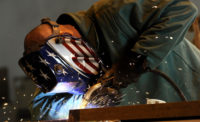A new study by the National Council on Compensation Insurance (NCCI) to determine if demographic changes are behind the continuing decline in workers compensation (WC) claims has yielded some surprising results. Among them: that the aging of the U.S. workforce is not a factor.
According to NCCI, WC claims have fallen by nearly one-third in the last ten years, part of a trend that’s been going on for more than two decades. At the same time, the number of workers who are at least 55 years old has doubled since 2000, while the number of workers under 55 has been stable. Given the increasing percentage of women in the labor force (now at 47 percent) and the share of the labor force working in the service sector, NCII set out to investigate the relationship between changing workforce demographics and workers compensation frequency.
Key findings of Changing Workforce Demographics and Workplace Injury Frequency:
- Incidence rates and causes of injury vary meaningfully by worker demographics
- Younger prime‐age workers have lower injury frequency than older workers, a reversal from 10 years ago
- Younger workers have relatively more contact injuries and relatively fewer falls, slips, and trips
- Men have higher injury frequency than women, but the gap is shrinking
- The gender gap in frequency and its decline are primarily driven by contact injuries Men are concentrated in sectors that have high contact injury rates
- Goods‐producing sectors, such as Construction and Manufacturing, have higher injury frequency than most service sectors
- Most sectors have experienced similar frequency declines in percentage terms
- In aggregate, frequency decline is mainly the result of lower incidence rates for all workers, not the result of changing workforce demographics
- The aging workforce has had almost no net effect on frequency decline
- Increased proportions of female and service sector workers push frequency downward a little bit
Causes of injuries
Three types of workplace events are responsible for more than 85 percent of WC cases: overexertion, contacts with objects/equipment and falls/slips/trips.
Since 2006, incidence rates have declined the most for overexertion and the least for falls, slips and trips. Since older workers have relatively more falls, slips and trips, "injury mix does lead to slightly smaller incidence rate declines than for younger workers," according to the report. "But these effects are small.
"The second reason why younger workers may be seeing larger decreases in incidence rates than older workers is because incidence rates for every major cause of injury have declined more for younger workers."
Male workers experience more injuries than female workers, but in the last ten years - during which the gender composition of the workforce did not change much - the gap has been cut by more than half. Man have roughly twice the rates of contact injuries as women, mostly because of a different occupational mix.
A greater proportion of women's injuries are falls, slips and trips. The share of overexertion injuries among women has fallen from 39 percent to 33 percent since 2006.
Click here to read the report.



